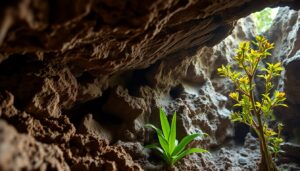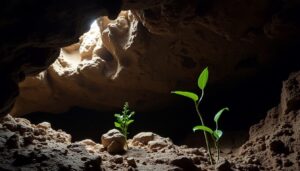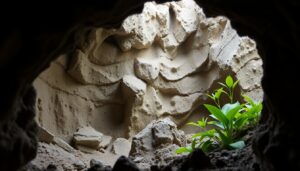Your cart is currently empty!
Belizean Caves: Exploring Archaeology, Climate, and Biodiversity

Belize, celebrated for its stunning coral reefs and ancient Maya ruins, conceals an extraordinary collection of remarkable archaeological and ecological marvels beneath its surface. The extensive limestone cave systems have long intrigued researchers and adventurers, offering unique insights into the ancient Maya ritual life, detailed climate records, and distinctive subterranean ecosystems. Recent scientific explorations within Belizean caves have unveiled astonishing discoveries that not only deepen our understanding of the Maya civilization, but also illuminate historical climate changes and the existence of rare and previously unidentified cave species.

1. Delve into the Enigmatic History of Maya Rituals Discovered in Belizean Caves
The mesmerizing cave systems within Belize, such as the famous Actun Tunichil Muknal (ATM Cave), Barton Creek Cave, and Cara Blanca Caves, have yielded some of the most remarkable archaeological evidence regarding Maya sacrificial and ceremonial practices. These sacred caves were seen as gateways to the Maya underworld, known as Xibalba. Recent archaeological discoveries have notably enriched our understanding of their deep spiritual and societal significance, uncovering layers of complexity that were previously overlooked.
1.1 The Surprising New Interpretation of the “Crystal Maiden” Skeleton
The iconic calcified skeleton, famously known as the Crystal Maiden, found within ATM Cave, was historically regarded as the remains of a female sacrifice. However, recent forensic analysis has led to a reevaluation of this long-standing assumption. Through advanced isotopic and morphological studies, findings now indicate that these remains likely belonged to a young male. This significant revision encourages scholars to re-examine the social and religious dynamics that influenced human sacrifices in Maya ritual practices, particularly during periods of environmental stress, such as the severe droughts experienced around the 9th century CE.
1.2 Unearthing New Contexts for Maya Ritual Practices
Excavation initiatives in Barton Creek and Cara Blanca have resulted in the discovery of previously unknown ceremonial chambers, complete with intact pottery collections and human remains, encompassing both infants and adults. The presence of “kill holes” punctured through ceramic vessels suggests a prevalence of ritualistic ceremonies aimed at “spirit release” performed within these sacred caves. These revelations indicate that Maya cave rituals were not only more intricate but also more broadly practiced across different regions than previously believed, reflecting a rich tapestry of cultural traditions.
1.3 The Connection Between Maya Cave Rituals and Archaeoastronomy
Recent investigations have uncovered alignments of cave altars and hieroglyphic inscriptions that correspond with crucial solar events, including equinoxes and solstices. By utilizing laser scanning and photogrammetry techniques, researchers have confirmed that beams of natural light penetrate deep into select caves on sacred dates, illuminating focal points intended for ritual activities. This compelling evidence bolsters the theory that Maya priests used caves not only as spiritual sites but also as astronomical observatories, intricately linked to their calendrical systems and rituals.
2. Uncover Paleoclimate Insights from Cave Stalagmites in Belize
Thorough analysis of multiple stalagmites from caves such as Caves Branch and Actun Halal has enabled scientists to date and examine stable oxygen and carbon isotopes, yielding intricate paleoclimatic records. The layered formations of these mineral deposits create detailed annual chronologies of humidity and rainfall, which correlate strongly with archaeological evidence of societal changes and the eventual decline of the Maya civilization around 900 CE. These findings reveal critical climate shifts that significantly impacted the region.
Researchers have identified significant decreases in precipitation, referred to as megadroughts, which likely strained food production systems and triggered an increase in ritualistic activities within the caves. The paleoclimate reconstructions derived from Belize’s caves represent some of the most comprehensive climatic records in Mesoamerica, providing essential insights into how natural climate fluctuations have influenced human history and societal evolution.

3. Unveiling Biodiversity: The Unique Ecosystems Hidden Within Belize’s Caves
Beyond their archaeological and geological importance, the caves of Belize are vibrant ecosystems that harbor rare life forms specifically adapted to thrive in perpetual darkness and isolation. Recent speleobiological expeditions have documented a variety of unique species, including blind crustaceans and specialized cave fish, alongside distinct bat colonies exhibiting unusual behaviors. These findings emphasize the ecological significance of Belize’s caves and their critical role in maintaining biodiversity.
3.1 Discovering New Species and Patterns of Endemism in Belizean Caves
Researchers have identified several new species of crustaceans endemic to the subterranean waters of Belize, showcasing unique genetic adaptations indicative of long-term evolutionary isolation. Additionally, various cave systems house bat species that are essential for Belize’s biodiversity, including fruit bats that play crucial roles in seed dispersal and pollination, thereby contributing to the health and resilience of local ecosystems.
3.2 Unveiling Subterranean Lakes and Their Unique Inhabitants
Exploration of previously unmapped cave passages has led to the discovery of water-filled chambers populated with previously unknown fauna. These subterranean lakes may host extremophile microorganisms akin to those theorized to exist on other planets, attracting attention from both the astrobiology and microbiology communities. These discoveries could offer critical insights into the adaptability of life in extreme environments and the potential for life beyond Earth.
4. Understanding the Broader Implications of Recent Discoveries in Belizean Caves
- Holistic Insights into Maya Studies: The archaeological and paleoclimatic insights gained from Belize’s caves significantly enrich narratives surrounding ritual practices, political upheaval, and climate-induced societal transformations.
- Conservation Importance: These caves are not only vital heritage sites but also biodiversity hotspots that require protection from tourism and environmental threats to preserve their integrity and ecological functions.
- Impact on Sustainable Tourism Practices: Implementing sustainable, guided access to these caves is crucial for maintaining their integrity while offering enriching educational and cultural experiences for visitors.
5. Essential Guidelines for Responsible Visits to Belizean Caves
Given their archaeological sensitivity, prominent caves such as ATM require guided tours led by licensed professionals, typically based in San Ignacio. Tourist groups are intentionally kept small and meticulously managed to safeguard fragile artifacts and delicate ecosystems. Photography may be prohibited inside many caves to prevent potential damage, thereby enhancing the authentic and transformative experience for visitors.

Visitors are encouraged to wear appropriate footwear, be prepared for physical activities such as swimming and climbing, and to respect the local spiritual traditions associated with these caves.
6. Comprehensive Resources for Further Exploration of Belizean Caves
- Smithsonian Magazine: New Evidence on ATM Cave’s ‘Crystal Maiden’
- National Geographic: Unveiling the Secrets of Maya Caves
- Cambridge University Press: Insights into the Cara Blanca Caves of Belize
- Solar Alignments in Belizean Caves – Archeoastronomy Journal
- Science Advances: The Impact of Climatic Events on Maya Civilization Collapse
- Speleological Society: Researching Cave Biodiversity in Belize
The caves of Belize continue to serve as portals to ancient worlds, climatic histories, and unique biological realms. Each expedition into their depths holds the promise of new insights, solidifying Belize as an invaluable treasure in both archaeological and natural sciences.
The Article Recent Discoveries in Belizean Caves: Archaeology, Climate, and Biodiversity Unveiled first appeared on Belize Travel Guide.
The Article Belizean Caves: Unveiling Archaeology, Climate, and Biodiversity Was Found On https://limitsofstrategy.com
Comments
One response to “Belizean Caves: Exploring Archaeology, Climate, and Biodiversity”
-
It’s fascinating to think about how these cave systems serve as time capsules, revealing so much about the Maya civilization’s rituals and daily life. As I read about Actun Tunichil Muknal and the other caves, I couldn’t help but wonder how similar discoveries in other parts of the world have shaped our understanding of ancient cultures. For example, the burial sites in Egypt have provided insights into their religious practices and societal structures.
Leave a Reply